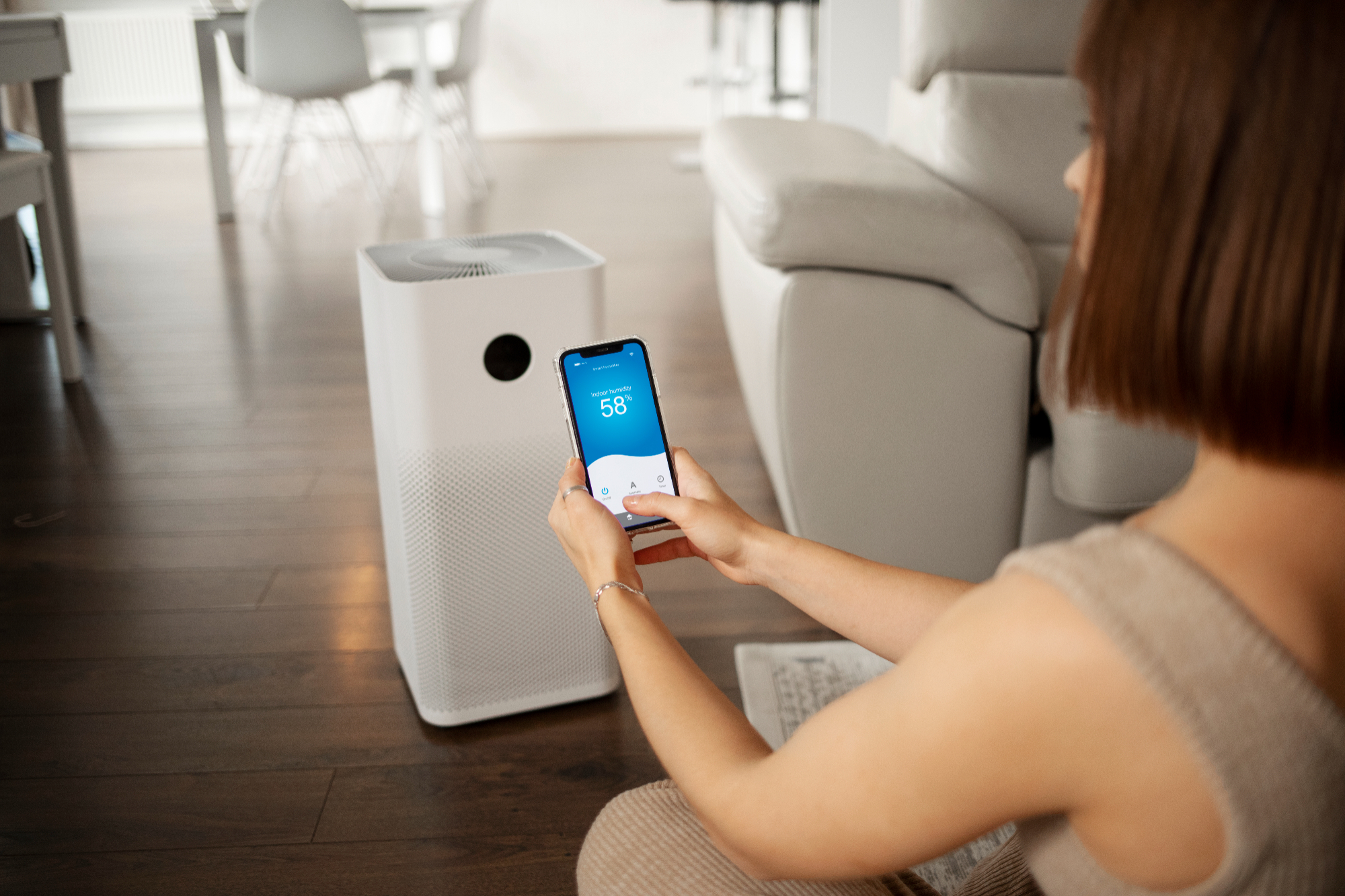Client Overview
The client operates in the environmental health sector, focusing on consumer-facing air quality solutions. They recognized a growing demand for easy-to-deploy, real-time monitoring devices that offer both mobility and in-depth analytics.
Project Context
Existing solutions often required pairing with a mobile app or separate display, creating dependency and limiting usability. The client needed a single device that could measure various air quality metrics, display results instantly, and also provide remote data logging—catering to both everyday consumers and small businesses concerned about indoor environmental conditions.
The Challenge
Real-Time Monitoring
Users wanted immediate, on-device feedback without having to rely on a separate phone or tablet for data visualization
Portability & Durability
The device had to be compact, robust, and easy to transport or relocate, appealing to users who might test multiple indoor spaces.
Data Accuracy & Cloud Connectivity
While the device needed to display metrics on its own screen, it also required secure cloud integration for historical logging and deeper analytics.
Solution Overview
A custom, self-contained Indoor Generation Kit was designed to measure key air quality metrics (e.g., temperature, humidity, CO₂, particulate matter) in real time.
The solution features a built-in display for immediate insights and leverages a cloud back end for extended data storage and analysis.
Methodology
Hardware & Sensor Selection
 Selected high-precision sensors to ensure reliable readings.
Selected high-precision sensors to ensure reliable readings. Engineered a compact, rugged enclosure to house all components securely.
Engineered a compact, rugged enclosure to house all components securely.
On-Device Interface & Cloud Connectivity
 Developed a local display system for instant data visualization.
Developed a local display system for instant data visualization. Leveraged Node.js for back-end logic, synchronizing data with a remote server running MongoDB for historical tracking and analytics.
Leveraged Node.js for back-end logic, synchronizing data with a remote server running MongoDB for historical tracking and analytics.
User-Centric Design & Testing
 Focused on an intuitive interface that clearly shows critical metrics without additional apps.
Focused on an intuitive interface that clearly shows critical metrics without additional apps. Conducted multiple rounds of prototype testing in diverse indoor environments to refine sensor calibration and device ergonomics.
Conducted multiple rounds of prototype testing in diverse indoor environments to refine sensor calibration and device ergonomics.
Deployment & Integration
 Assembled the hardware into a durable, portable casing with built-in sensors.
Assembled the hardware into a durable, portable casing with built-in sensors. Created a Node.js-based back end on the device for local data processing.
Created a Node.js-based back end on the device for local data processing. Set up cloud synchronization using MongoDB for long-term data storage and advanced analytics.
Set up cloud synchronization using MongoDB for long-term data storage and advanced analytics.
Training & Optimization
 Conducted in-house testing to validate sensor accuracy under different environmental conditions.
Conducted in-house testing to validate sensor accuracy under different environmental conditions. Iterated on user interface elements for clarity and ease of navigation on the built-in display.
Iterated on user interface elements for clarity and ease of navigation on the built-in display.
Continuous Monitoring & Support
 Established remote monitoring capabilities to track device health and performance.
Established remote monitoring capabilities to track device health and performance. Offered firmware updates and sensor recalibration guides to ensure ongoing accuracy.
Offered firmware updates and sensor recalibration guides to ensure ongoing accuracy.
Key Actions & Milestones
Phase 1: Prototype Development & Sensor Validation
Developed an initial prototype focusing on sensor accuracy and real-time display functionality.
Phase 2: Cloud Integration & Testing
Implemented data synchronization to a cloud server running MongoDB, ensuring robust remote access and analytics.
Phase 3: User Interface Refinement
Enhanced the built-in display layout to present critical air quality metrics clearly, minimizing user confusion and setup time.
Phase 4: Pilot Launch & Feedback
Deployed pilot units to select customers and environments, gathering feedback to fine-tune device ergonomics and sensor calibration.
Results & Impact
Quantitative Outcomes
 Instant Readouts: The built-in display delivers immediate feedback on air quality metrics, cutting response time to potential indoor pollutants.
Instant Readouts: The built-in display delivers immediate feedback on air quality metrics, cutting response time to potential indoor pollutants. Cloud-Enabled Analytics: Data synchronization allows users to track historical trends, facilitating better decision-making for indoor environment management.
Cloud-Enabled Analytics: Data synchronization allows users to track historical trends, facilitating better decision-making for indoor environment management.
Qualitative Impact
 Reduced Dependency: Eliminating the need for a separate phone or tablet app broadens the device’s usability, particularly for users seeking a self-contained solution.
Reduced Dependency: Eliminating the need for a separate phone or tablet app broadens the device’s usability, particularly for users seeking a self-contained solution. Greater User Confidence: A durable, portable design and intuitive interface provide peace of mind, encouraging regular monitoring and proactive air quality improvements.
Greater User Confidence: A durable, portable design and intuitive interface provide peace of mind, encouraging regular monitoring and proactive air quality improvements. Scalable Platform: The modular architecture supports additional sensors or software features, enabling future expansion into new markets and use cases.
Scalable Platform: The modular architecture supports additional sensors or software features, enabling future expansion into new markets and use cases.

